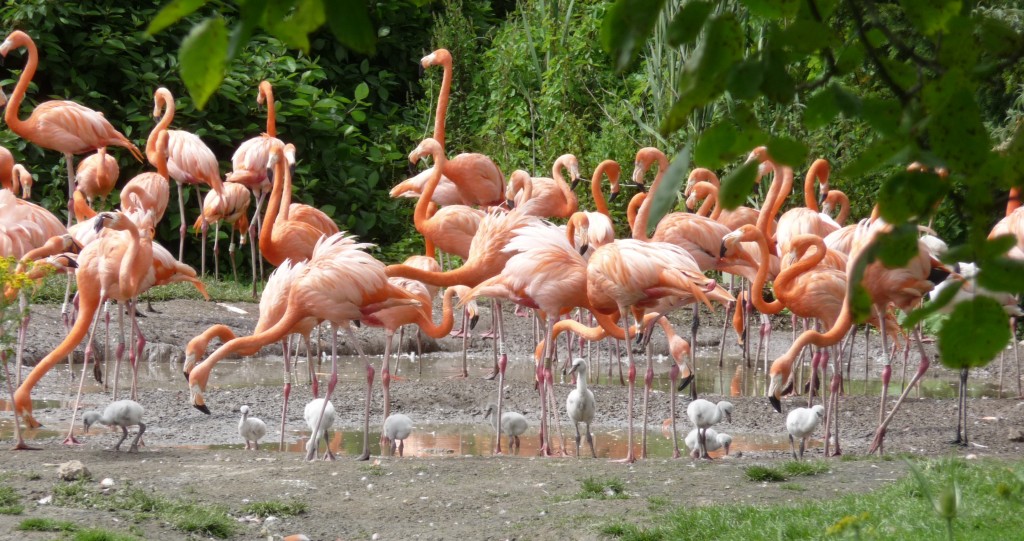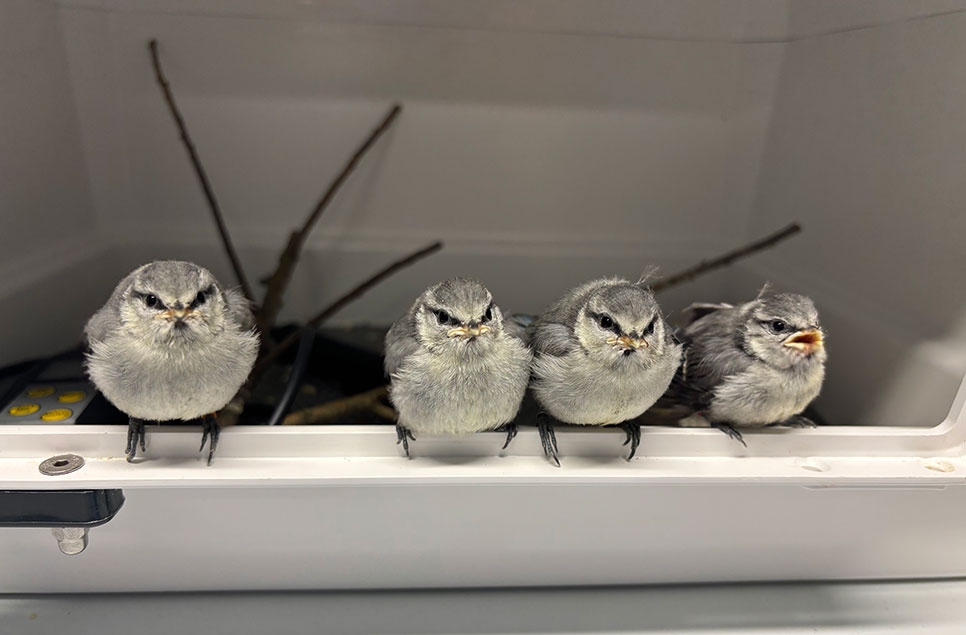Shared childcare in the flamingo's world
Visitors to the Caribbean flamingos' enclosure will no doubt be aware that the little bundles of fluff, until fairly recently confined to the tops of the nest mounds are now running around all over the enclosure. You will often find several chicks (of differing ages) grouped together in one area, watched over by several lofty adults. This behaviour, known as creching, helps to improve the likelihood that each flamingo chick survives until hatching. Whilst the flamingos at WWT Slimbridge are not exposed to predators in the same as wild birds are, this creche-forming behaviour remains inherent in the flock. Chicks make much less visible individual targets for predators if they group together, and by having all of the chicks in one place, it only takes a few adults to watch over them, leaving other birds free to feed, bathe or preen. At Slimbridge, the avics try and encourage the chicks to creche in areas in the middle of the enclosure, where they will feel safer. The type of ground that the chicks walk on is also important to the health of their feet and river sand is used (an excellent substrate to keep flamingo feet in good condition) in areas that the chicks frequent. This creche of new arrivals also has a real benefit for visitors as it enables you to get a really good view of young flamingos and what they are getting up to.




